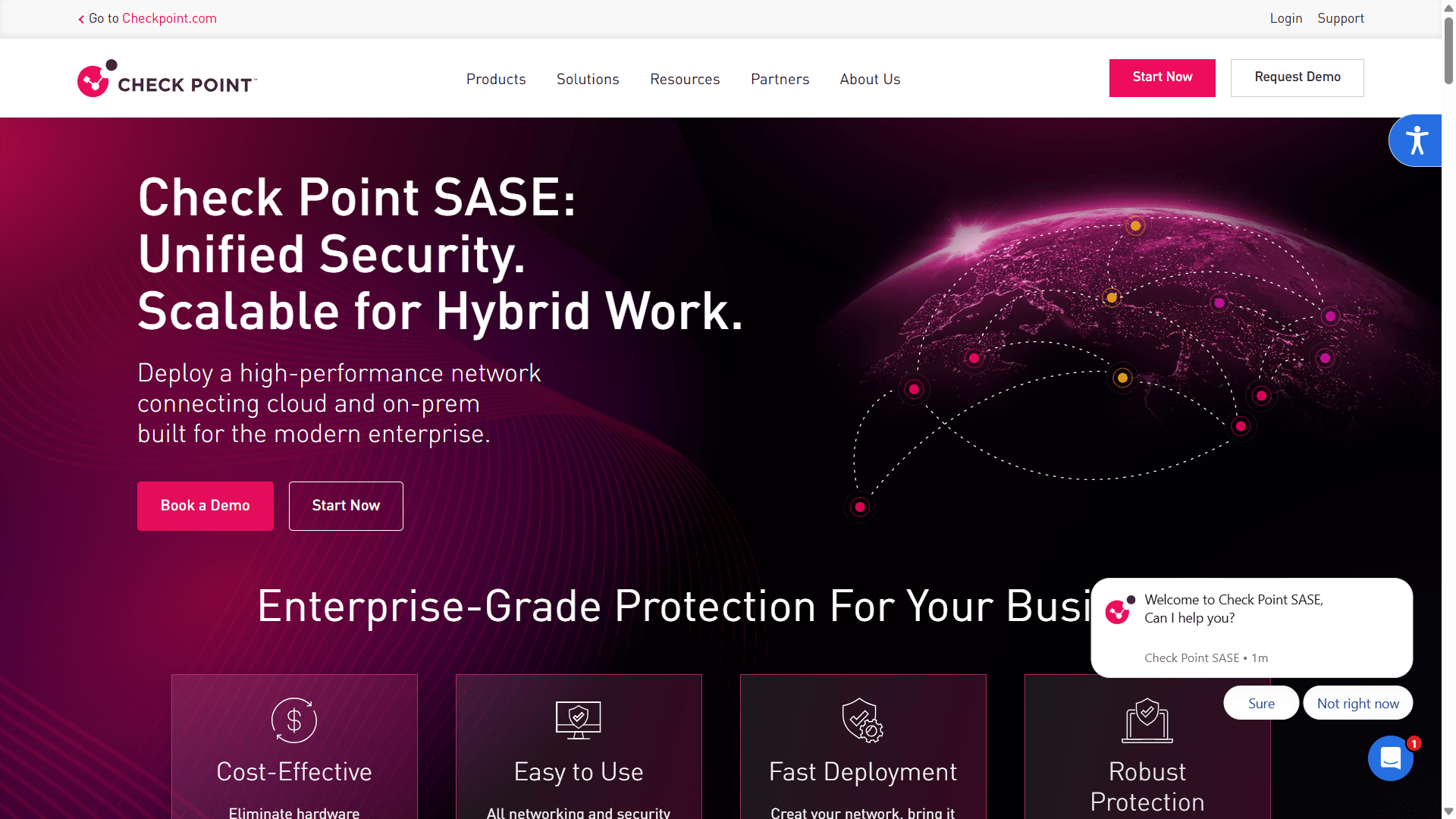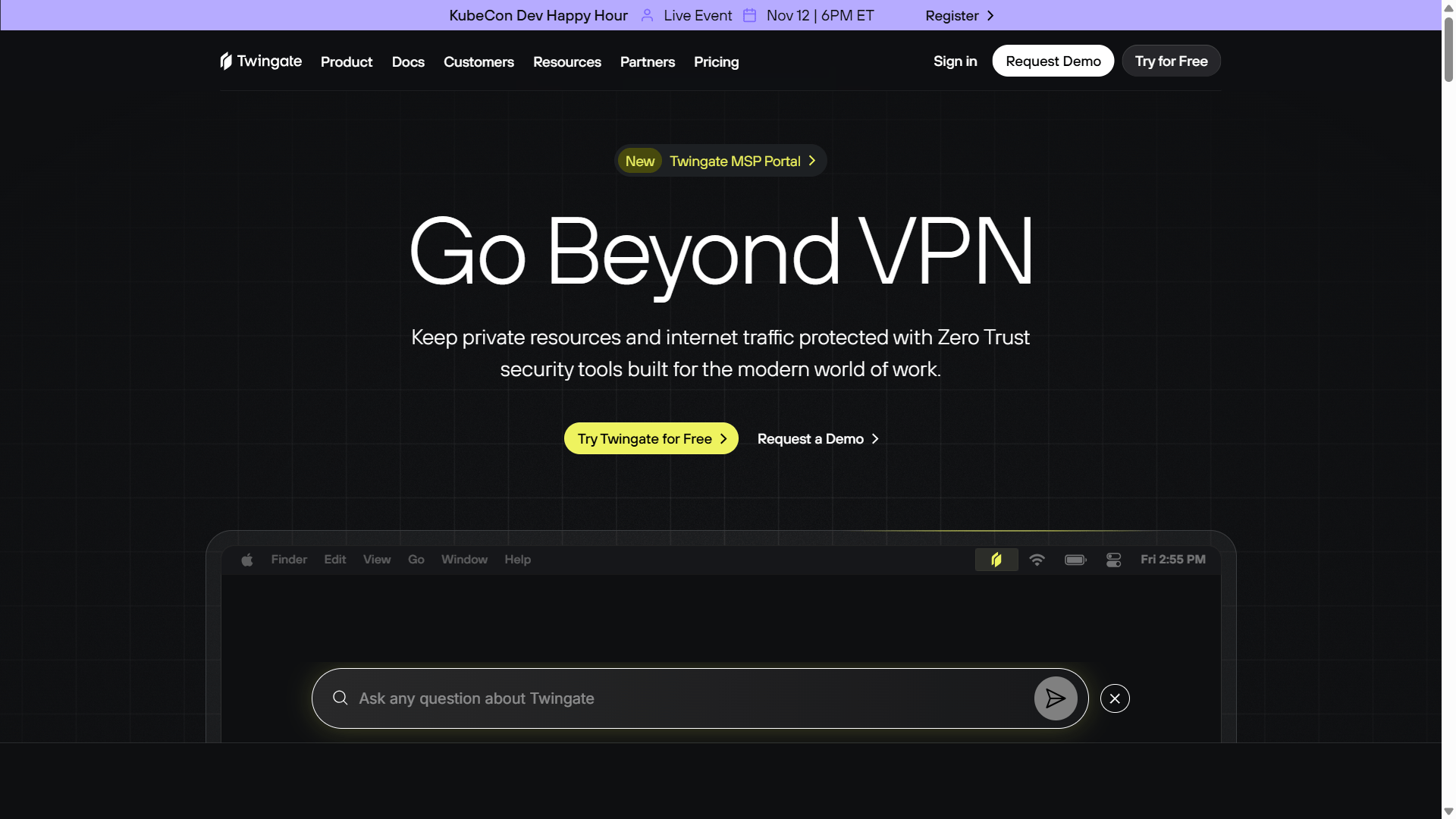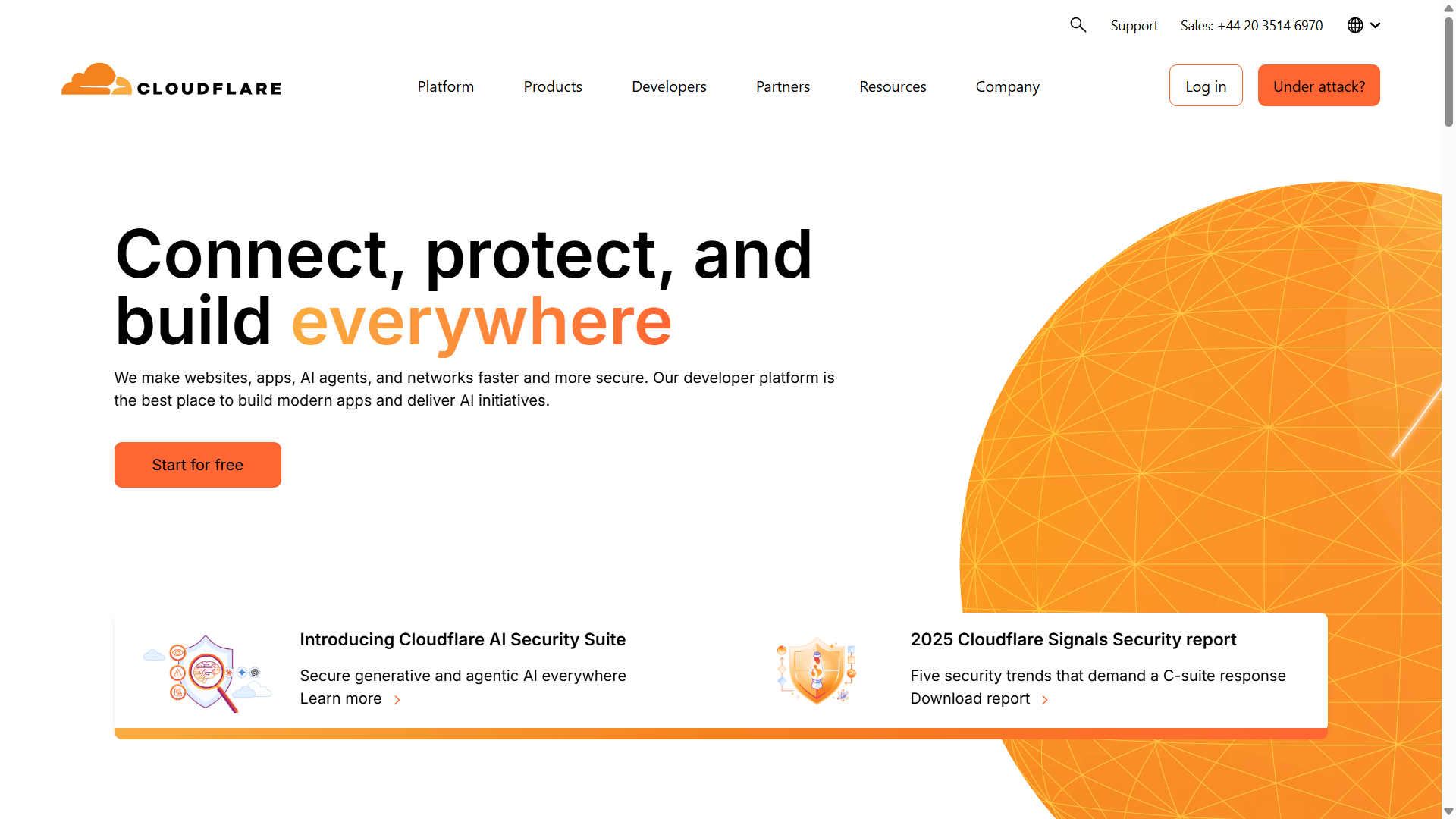Finding a cost-effective yet capable replacement for Zscaler can be tricky. Below is an updated, in-depth guide to Zscaler alternatives that balance features, support, scalability and pricing. Each option includes links, pros/cons and real numbers (when available) so you can judge which fits your use case.
What to Look for in Zscaler Alternatives
Before we dive in, here are key features to compare across vendors:
Zero Trust / ZTNA support
Secure Web Gateway (SWG) / SSL inspection
DNS filtering / DNS protection
Ease of deployment, especially for distributed workforces
Global points of presence / latency
Add-on costs (firewall, DLP, CASB, remote browser isolation)
Transparent pricing / per-user cost
With that in mind, here are 12 credible Zscaler alternatives worth evaluating
1. Perimeter 81 (Check Point SASE)

Overview & origin: Perimeter 81 (now under Check Point, rebranded partly as Check Point SASE / Harmony SASE) is an established player in the cloud networking / zero trust space.
Pricing & tiers:
Essentials: ~$8/user/month (annual) + $40/month per dedicated gateway
Premium: ~$12/user/month (adds firewall, DNS filtering, SSO)
Premium Plus: ~$16/user/mo (adds advanced features)
Enterprise / custom: negotiable for large scale
What makes it a strong Zscaler alternative:
It offers a unified network + security control plane (SWG, ZTNA, firewall as a service).
Because it’s backed by Check Point, you can integrate with an existing Check Point ecosystem.
Mature feature set and broad global presence.
Caveats & considerations:
The entry tier omits some advanced features (always-on VPN, full DNS filtering)
Dedicated gateway fees add extra cost per location.
The procurement path is more “enterprise sales” style vs pure self-serve.
2. Twingate

Overview: Twingate is a modern ZTNA solution designed to replace legacy VPNs with identity-centric access.
Pricing & tiers:
Free: supports up to 5 users (for small / trial use)
Teams: $6/user/month (monthly), or $5/user/month billed annually
Business: $12/user/month (or $10 billed annually)
Enterprise: custom pricing for large organizations
Strengths as a Zscaler alternative:
Very lightweight agent, fast deployment.
Ideal for internal app access (private access) with least-privilege policies.
Low overhead and modular — you can pair with other solutions for web filtering.
Weaknesses:
Not a full SWG — you’ll need to pair Twingate with a web security tool (DNS filter or SWG) to replicate Zscaler’s full breadth.
Advanced features (DNS filtering, DLP) may be add-ons in business/enterprise tiers.
3. Cloudflare Zero Trust (Cloudflare for Teams)

Overview: Cloudflare leverages its global edge network to provide ZTNA, SWG, DNS filtering and more — built around performance and scale.
Pricing & tiers:
Free tier: limited, suitable for small teams
Paid entry: ~ $7/user/month annually (for base Zero Trust features)
Add-ons (RBI, DLP, etc) sold separately
What makes it competitive:
Very strong global presence, meaning better latency for distributed users.
Modular: you pay for what you need, and you can extend with add-ons.
Transparent pricing documentation and wide community adoption.
Caveats:
Some advanced features are add-ons (e.g. Remote Browser Isolation, Data Loss Prevention).
The full feature set for enterprise use (CASB, user behavior analytics) can get expensive.
🔗 See: Cloudflare Zero Trust
4. Cisco Umbrella

Overview: Cisco Umbrella (based on OpenDNS) provides DNS-layer protection, SWG, and cloud security features.
Pricing hints:
DNS protection only layers can start quite low (e.g. ~$2-3/user)
Full cloud gateway / SWG add-ons increase the price
Why it’s a solid Zscaler alternative:
Strong in DNS filtering and threat intel via Cisco Talos.
Easy to layer over existing network deployments.
Broad enterprise support and maturity.
Trade-offs:
Doesn’t always include all advanced SWG features in base packages.
Deep inspection and SSL proxying raise complexity and cost.
🔗 Cisco Umbrella: cisco.com umbrella
5. NordLayer (NordVPN Business)

Overview: NordLayer is the business / enterprise extension of the NordVPN family, offering secure remote access, site-to-site tunnels, and some Zero Trust features.
Pricing guide:
Ranges from ~$8 to ~$14 per user monthly depending on features and contract length.
Pros:
Familiar brand & solid reputation in VPN space.
Good option if your primary need is secure access first, then scale to web filtering.
Cons:
Not a full SSE / SWG platform — you may need extras.
Feature gaps in DLP, CASB, deep security controls.
🔗 NordLayer:
6. GoodAccess
Overview: GoodAccess positions itself as a balanced, low-cost ZTNA / VPN replacement with user-friendly design.
Pricing display:
~$7-$11 per user per month depending on contract and features.
What it does well:
Simple admin console, good for small to mid-size firms.
Basic web filtering, device posture, access policies.
Limitations:
Lacks advanced DLP/CASB and deep inspection.
May not scale to very large or highly regulated environments.
🔗 GoodAccess: goodaccess.com/pricing
7. Fortinet FortiSASE / FortiSASE Advanced
Overview: FortiSASE is Fortinet’s convergence of security + networking, marrying their firewall and SD-WAN strength into a SASE stack.
Pricing:
Not published openly; vendor / partner quoting is required.
Advantages:
Strong integration with existing Fortinet deployments.
Good for organizations already invested in Fortinet for on-prem perimeter security.
Challenges:
Complex procurement.
Add-on costs and licensing layers (security services, SD-WAN, inspection) make total cost higher.
🔗 Learn more: Fortinet SASE offerings
8. Cato Networks
Overview: A mature SASE provider offering full SSE (SWG, CASB, ZTNA) plus a private global backbone.
Pricing model:
Enterprise / custom. Outsourced, managed approach.
Strengths:
All-in-one platform, less need to assemble components.
Global backbone helps reduce latency and bottlenecks.
Weaknesses:
Not ideal for small budgets — best for mid to large enterprises.
Less flexibility in modular customization.
🔗 More: Cato Networks
9. Netskope
Overview: A leader in SSE — combining SWG, CASB, DLP, private access in a cloud-first architecture.
Public pricing insight:
Some SWG module pricing documents show ranges ~$55–$109/user/year depending on bundle (i.e. ~$4.5-9/user/month)
Why you might pick it:
Deep security controls suitable for compliance-sensitive environments.
Excellent threat detection, cloud data controls, and analytics.
Downsides:
High cost when fully deployed.
Module-based pricing means costs stack up.
🔗 Netskope: netskope.com
10. DNSFilter (by NFT Labs)
Overview: Light-weight DNS-level content filtering, malware protection and web classification.
Pricing:
Very low — often less than $1/user/month for basic tiers.
Good uses:
As a first line of defense or to complement a ZTNA solution.
Useful for smaller teams that only need basic web filter / threat block.
Limits:
DNS-level only — cannot inspect encrypted SSL traffic or enforce deep application controls.
You won’t get full Zscaler replacement by itself.
🔗 DNSFilter: dnsfilter.com
11. Palo Alto Networks — Prisma Access
Overview: Palo Alto’s enterprise SASE service, integrated with their firewall platforms and policy models.
Pricing:
Quote-based — aimed at midsize to large enterprises.
Why choose it:
Best-in-class controls, tight integration with PAN-OS, strong security posture.
Good if your organization already uses Palo Alto firewalls.
Challenges:
High cost of ownership.
Deployment and consulting complexity.
🔗 Palo Alto / Prisma Access: paloaltonetworks.com
12. Self-Hosted / Open Source Stack
Overview: Build your own proxy + inspection layer using open tools (Squid, pfSense, ClamAV/ICAP, Suricata etc.).
Cost & tradeoff:
Software cost: free / open source
Infrastructure & hosting cost: your cloud/VM/storage
Human cost: skilled ops for maintenance, patching, SSL certificate management
Pros:
Maximum control, no per-user licensing.
Good for tight budgets with skilled sysadmins.
Cons:
Lacks managed threat intel, updates, ease-of-use.
Support, scaling, high availability are your responsibility.

